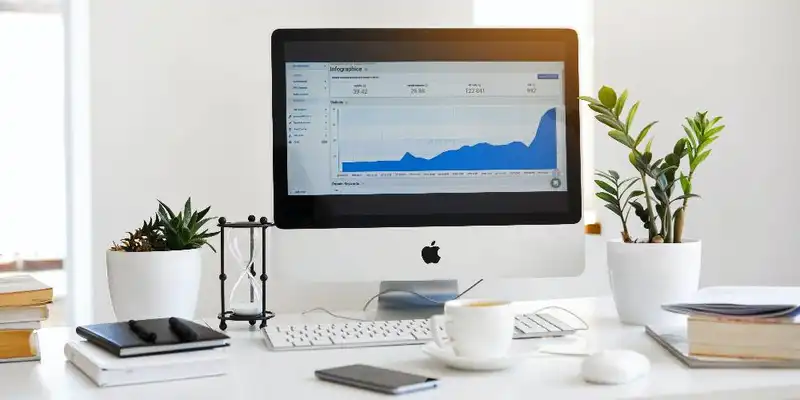How to Calculate and Reduce Stock Out Cost to Maximize Sales
Replenishing inventory and maintaining the economic order quantity is vital to meeting customer demand and preventing stockouts.
Stockouts occur when production depletes all units of raw material, requiring operations to stop. A halt in operations restricts order fulfillment, which reduces average sales and revenue. This loss of income can ultimately affect profits and the bottom line.
Throughout this article, we will discuss the implications of stockouts, calculations, and preventative measures.
Effects of a Stockout
Stockouts can result from various scenarios, such as under ordering or a sudden surge in demand. The implications of this can range from lost sales due to inadequate stock as well as poor customer satisfaction due to unfulfilled and delayed orders.
A stockout can also occur from a manufacturer's inability to produce a product, due to errors in the supply chain, mechanical issues, or technical difficulties.
In the event of a stockout, multiple effects commonly occur, including-
1. Customers have to wait longer for their orders - If the item is a popular product across the market, many customers will wait longer for their orders. While better than the complete inability to fulfill the order, longer wait times lead to unsatisfied customers.
2. Backorders pile up - While not ideal for the business or customer, backorders allow consumers to place their orders on an out-of-stock product. However, backorders on high-demand products can quickly build up, creating stress and overworking production while increasing delays for customers.
3. Customers cancel their orders - If a customer does not see the product as vital or can buy it immediately from another vendor, they can cancel their order. Cancelations lower profits and can be an indicator of an unsatisfied customer.
4. Customer retention decreases - If a customer wants a product that is not available and is unwilling to wait for a restock, it is possible that they will not return to the business. As customer retention decreases, so does average daily sales, revenue, and the bottom line.
Hidden Costs of Stockouts
A business can lose much more than inventory during a stockout. A report published by CNBC revealed that retail companies lost over $634 billion in profits in 2015 from stockouts.
This crippling profit loss was a sum of several hidden fees that are involved in stockouts. Other than the apparent loss of inventory, businesses can experience high costs of back-ordering, canceled orders, and lost customers.
1. Back Ordering
When customers overwhelm businesses with backorders, there are costs the fulfillment centers must pay. Companies must pay suppliers increased handling costs to ensure they are promptly receiving the products. This often includes extra fees for expedited delivery.
Meanwhile, on the customer service end, the staff members must change the order delivery dates and sometimes offer faster or discounted shipping offers to regain customer trust.
In the long run, backorders could affect average sales. A study from Multi Channel Merchant showed that significant backorders could result in a 10% decrease in sales. This decline can be attributed to unsatisfied customers who were unhappy with the extended lead time due to the stockout.
2. Canceled Orders
Canceled orders usually indicate that the customer could find a vendor that offered the desired product or was able to fulfill the request quicker. The company's initial loss from the canceled order is the loss of profits. However, they also lose any money spent on the stock to produce the order, including shipping and handling costs for the expedited products
A poll posted by Statista shows that 41% of online shoppers have canceled their orders at least once. Retailers and online businesses have tried different ways to combat order cancelations. Many companies try to offer unsatisfied customer incentives, discounts, or free services to regain customer loyalty, which is deducted from the company's profits.
3. Losing Customers
In the worst-case scenario of a stockout, companies can lose a customer's business altogether. This event is the biggest hit a business can endure as it changes the sales average and demand rates. If the customer lost was a major client, every financial parameter, including production costs and inventory capital, needs to be reevaluated.
Then there is the cost of whatever initiative the business is taking to try to gain new customers. All of these expenses can quickly add up to diminish the bottom line and potentially put the vendor in severe financial difficulty.
Calculating Stockouts

Stockouts have varying effects on companies in terms of cost. To calculate the cost of a stockout, a business first needs to identify-
- Number of Days Out of Stock (D)
- Average Units Sold per Day (S)
- Price per Unit (P)
- Cost of Consequence (C)
The cost of consequence usually only applies to businesses that handle raw materials, requiring additional expenditures on assembly lines to compensate for stockouts. Therefore, if a company recruited their production line to produce another item that had sufficient stock levels, any spending required for the change would be reported as cost of consequence.
Once these values are identified, the total cost of a stockout can be calculated using the formula-
Stockout cost = (D x A x P) + C
For example, a company experiences a stockout of computers that lasts four days. On average, the daily sales volume for this item is 10, at $650 per computer. Assuming that there was no cost of consequence, their stockout cost equation would be set up accordingly-
$26,000 = (4 days x 10 items x $650)
This stockout cost shows that the company's lack of adequate inventory replenishment cost them $26,000 in sales.
How to Avoid Stockouts

Businesses aim to limit their inventory on hand to save on storage costs while still meeting customer demand and avoiding stockouts. This balance is a very fine line but can be achieved by managing the supply chain systematically. Tips for preventing stockouts include-
1. Understand the inventory - Businesses need to have a strong understanding of everything involving their stock, including the cost of raw materials, average shipment time from vendors, processing costs, holding costs, stock shelf-life, average demand, and lead times for each product. Understanding every aspect of inventory prevents any issues when ordering, producing, and shipping products.
2. Implement automated processes - Automated systems help smooth operations by limiting human error and streamlining production by continually monitoring inventory levels in the production line. These systems also forecast demand rates when integrated with forecasting software, can automatically reorder materials, and estimate delivery times.
3. Determine reorder points - Reorder points refer to the minimum threshold of stock quantity that warrants a reorder. Without a proper reorder point implemented, production can completely deplete materials, resulting in a stockout. Reorder points can be inputted in automated processes, so when stock levels hit the reorder point, a new order is automatically placed.
4. Implement an inventory management system - Inventory control systems can be integrated with point-of-sale (POS) systems and barcode scanners to report real-time stock levels. By monitoring every transaction, order, and shipment, inventory software alerts management when the stock reaches the danger level. These systems also generate detailed reports on usage, demand, and sale rates so management can ensure stock levels and operational performance are optimized.
The cost of stockouts runs deep into business operations. Companies who experience shortages in inventory have to dip into their profits for extra stock and production costs while planning customer satisfaction initiatives for damage control. Therefore, it is vital that businesses implement precautions to avoid stockouts and maximize sales the first time around.





